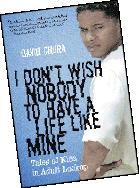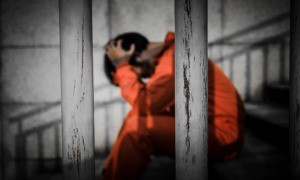 |
David Chura
Beacon Press
216 pages. $24.95 hardcover.
When the media and some academics embraced the concept of juvenile “super-predators” in the mid-1990s, “the war on crime was brewing into a war on kids,” declares David Chura. With 40 years of experience working with youth in a homeless shelter, a psychiatric hospital, a community crisis center, an alternative school and a prison classroom, Chura believed that “only one side of the story was being told.”
Though he has written extensively about the juvenile justice system, Chura’s first book is an attempt to bring to life the other side of the story in the form of a collection of nonfiction sketches based on 10 years of teaching English at the Incarcerated Youth Program at New York’s Westchester County jail.
By 1996, Chura writes, public panic about a population explosion of ruthless teenagers prompted Congress to pass legislation allowing widespread prosecution of juveniles as adults. Instead of being rehabilitated through juvenile justice, the kids in Chura’s classroom were punished among adult prisoners.
One of them was Anthony, age 17, gentle and developmentally disabled. When a pal snatched a purse and tossed it to him, Anthony was charged with armed robbery. Although he had no gun and no record, Anthony was sent to state prison.
Describing the prison atmosphere as one that demanded taking sides, Chura – viewed as an outsider by the uniformed correctional officers – identified with prison inmates and visitors. He and the youth in his classroom, whom “society was punishing for victimizing others … were well aware that society had never held anyone accountable for victimizing them.”
Yet Chura gradually reveals “common ground” in 18 lyrical vignettes that portray his students, the jail, staff members and visitors. As his perceptions change, so do those of the reader.
“I hate civilians,” says the warden during his civilian-employee orientation. All prisoners are “human garbage,” the warden declares. Chura begins teaching in a moldy, makeshift 1914 classroom, where “the soupy stench of hundreds of men living together” leaks in. Later, he moves into a cleaner 1992 classroom. Much later, a tour of the new, high-tech maximum security unit seems impressive; within a year it has deteriorated because of the inmates’ solitary despair.
“Mr. C” sketches his students in prose poems; among them:
• Eddyberto, who creates intricate tattoos for prisoners from smoke and shampoo. But it’s his seemingly innocuous drawings on paper that get him deported to Panama as a terrorist threat.
• Anna, 22, facing years in federal lockup for her activities as a drug baroness at 17. She tackles her goal to earn a master’s degree – and shares her recipe for jailhouse banana pudding pie.
• Jonathan, who still sucks his thumb at 16, watches over the chicken egg incubator, turning each egg twice daily for 28 days until they hatch. Then he teaches his classmates to care for their own chicks just as tenderly as he fathers the lame chick he names Cripple.
Only when Chura comes to understand the correctional officers – chilly Wharton who volunteers at an animal shelter, surly Daven who relishes keeping Chura waiting, constant complainer Gomez – does he realize how power victimizes both guards and guarded. Today, as U.S. courts send more than 250,000 minors each year into adult prisons (according to a 2008 Juvenile Justice report), Chura’s anguished, incisive depiction of one of those outposts is not merely an indictment of the system. It’s a compelling call to repair our society’s brokenness. (617) 742-2110, http://www.beacon.org.





























